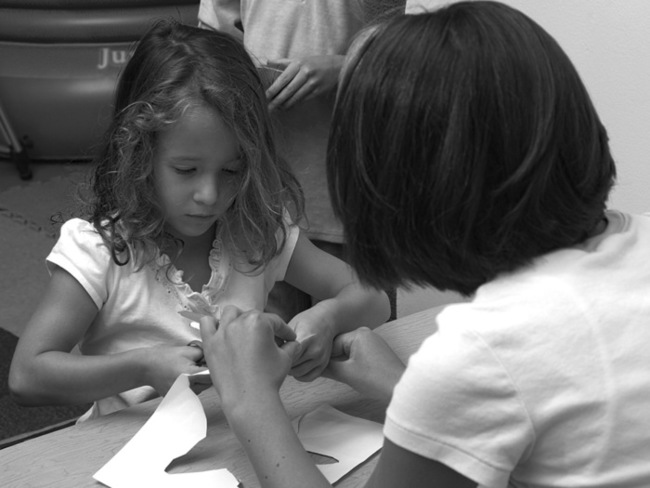After reading this chapter, the reader will be able to do the following: • Explain the nature of clinical reasoning • Describe the three elements of clinical reasoning • Describe the thought processes and strategies of clinical reasoning that are used by occupational therapy (OT) practitioners • Compare the clinical reasoning skills of the novice with those of the expert • Identify ways the OT practitioner can develop clinical reasoning skills L. DIANE PARHAM, PhD, OTR, FAOTA Occupational Science and Occupational Therapy University of Southern California There are many questions to contemplate when working with a client. Figuring out how to address client issues and intervene requires clinical reasoning which is the thought process that therapists use to evaluate clients and design and carry out intervention. It involves complex cognitive and affective skills; that is, it involves both thinking and feeling. All OT practitioners use clinical reasoning throughout each step of the occupational therapy process. Knowledge of clinical reasoning helps practitioners better serve their clients. OT practitioners use clinical reasoning to make decisions.12 Consumers and employers search for practice that is based upon evidence (i.e., supported through research). OT practitioners use clinical reasoning to critically analyze research, make decisions regarding services, and work with individual clients. This chapter provides an overview of the clinical reasoning process and provides strategies to help students develop these skills. Clinical reasoning may be characterized into three elements: scientific, ethical, and artistic.12 The scientific element addresses the question, “What are the possible things that can be done for this client?” The answer to this question is found in the evaluation and assessment procedures used to determine strengths and weaknesses of the client, the writing of a plan to guide and direct the change process, and the selection of therapeutic modalities that result in successful occupational performance outcomes. The scientific element demands careful and accurate assessment, analysis, and recording. The ethical element addresses questions such as, “What should be done for this client?” and “What is the right and fair path to take?” The answer takes into account the client’s perspective and his or her goals for intervention. Each individual has different views on health, what is important in life, and how things are accomplished. When the OT practitioner understands and respects the client’s perspective, an intervention plan that preserves the client’s values can be developed.12 The OT practitioner consults with the client so that he or she can participate in making decisions regarding intervention goals and methods. The OT practitioner considers all of the scientific and ethical information in relation to the individual’s needs, goals, culture, environment, and lifestyle.12 This example illustrates one of many ethical dilemmas OT practitioners may face. The practitioner must consider the right of the client and decide based upon the ethical principles of practice (see Chapter 8). The practitioner uses clinical reasoning to examine all of the alternatives, predict future success, and investigate the client’s needs. In this case, the clinician uses clinical reasoning to investigate all areas that might interfere with Mark’s living alone. This information can help the team develop alternative ethical solutions. Ethically, she is contributing to the desires of the client without letting the team down. The artistic element of clinical reasoning is evident in the skill used by the OT practitioner to guide the treatment process and select the “right action” in the face of uncertainties inherent in the clinical process.12 The therapeutic process involves integrating and blending many areas, such as deficiencies to be addressed, the client’s interests and wishes, the medium or activity to be used, and the interpersonal climate that is to support the therapy process. The therapeutic relationship and the way in which the OT practitioner interacts with the client play a major role in the artistic element. The artistic element involves using creativity to skillfully design intervention specific to a client. This requires the practitioner to modify activities, use humor or coaching, and read the cues of the client when interacting. Missy has developed a rapport with Brian, and the art of this interaction is evident as Missy reads Brian’s words as joking. Missy knows she has connected with Brian and can afford to joke with him. This same scenario may be interpreted as refusal of therapy and handled differently for another client. The art of therapy involves reading the client’s cues within the context of the setting and the client–therapist relationship. Artistic reasoning requires skill in the therapeutic relationship, creativity, reflection, and self-awareness (see Chapter 16). Rogers and Holm13 describe the steps in the thought process of clinical reasoning that is used during the occupational therapy evaluation and intervention process. During each step, the OT practitioner gathers, organizes, analyzes, and synthesizes information.13 See Box 17-1.
Clinical Reasoning

Elements of Clinical Reasoning
Thought Process During Clinical Reasoning
![]()
Stay updated, free articles. Join our Telegram channel

Full access? Get Clinical Tree


Nurse Key
Fastest Nurse Insight Engine
Get Clinical Tree app for offline access
